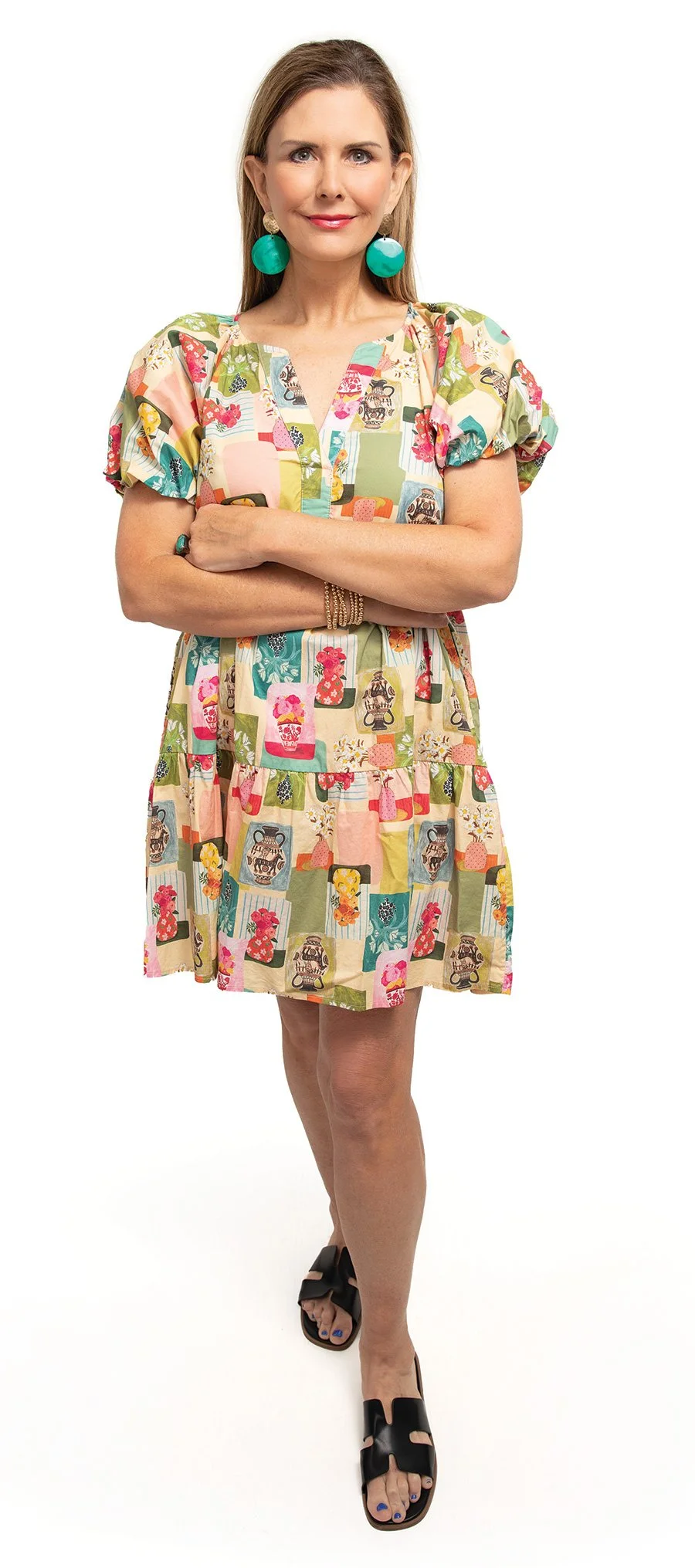The Way I See It...
Publisher's Letter
Robin Rogers, Ed.D.
November 2025
Why do we get all sentimental during the holidays? It is certainly not about the presents, the Black Friday sales, the overspending, or the relentless pressure to have the perfect holiday home, the perfect tablescape, the perfectly wrapped gifts under the perfectly decorated tree. We become sentimental because the holidays are the times that remind us most of our families—those who have passed and those who are still living, those bonded by biology and those chosen in love. We all gather to share stories, laugh, reminisce, and make new memories.
For me, the holiday season starts when my mother makes candy—Martha Washington chocolates, haystacks, and peppermint bark—which she only does in November and December. I can eat her candy until I just about make myself sick, and it is worth every single groan.
I’m the picture-taker in our family, always trying to document every little thing, from Thanksgiving feasts (prepared primarily by my mother . . . and Julie’s Deli) to post-meal board games. Looking back at my camera roll from past Thanksgivings, I am struck by how life passes so quickly, even though I don’t feel like that much is actually changing. I don’t feel older than I was 25 years ago—until the day after I have climbed into the attic and brought down ten plastic tubs of holiday decorations, my back aching. I still feel the desire to delight my children with holiday traditions but then recall that my three “kids” are now grown adults. When my mother warned me that their childhoods would pass way too quickly, I shrugged it off, but of course she was right; time fools me again and again. Thank goodness for those pictures and memories.
Though I know that the holidays are not really about presents, I also know that gift-giving is a way many of us show our love. And is there anything better than watching a child open a present they had been wishing for?
When I was a kid, I couldn’t wait for the Sears catalog to come in the mail. Those were the days. I spent hours combing through the book and dog-earing the pages of the things I wanted for Christmas. By the time my kids came along, there wasn’t a Sears catalog, but there was the Mistletoe Market (then called the Mistletoe Fair). Instead of dog-earing catalog pages, my kids would ooh and ahh at fun toys, cute clothes, and other fun gizmos that caught their eyes. “Maybe Santa will bring it,” I’d say, before sending them to buy a snack at concessions so I could purchase the item they so admired.
The annual tradition of merrymaking with friends and family at the Mistletoe Market brings smiles to people of all ages. The women on the cover are responsible for this year’s event, and while I know they have worked hard to innovate and improve, I am grateful that the heart of the event remains the same.
For over 100 years in Texarkana, the Junior League has been composed of women who volunteer in our community to raise money and lead programs to benefit area kids. The annual Mistletoe Market is not just shopping and entertainment; it’s a huge fundraiser, orchestrated by local volunteers who work tirelessly to make a difference in the lives of children.
Service to others is not for the faint of heart. People who volunteer learn very quickly that the needs of this community are greater than one would think. In my 30s and 40s, I served on almost every nonprofit board in the area (or at least it felt that way). Seeing firsthand that women and children were sleeping regularly at a homeless shelter was what I remember bothering me the most. If you don’t drive out of the comfort of your neighborhood, you might not know what happens a mile away. I understand the desire to stay ignorant to the suffering and injustice faced by so many in our community, but what are we teaching the next generation if we neglect to care for the most vulnerable among us? That is one of the reasons I admire the volunteers of JLT: they are teachers, physicians, business owners, and mothers who see firsthand the needs of our most vulnerable people in the community—kids—and they refuse to turn away. As we embark on November, the season of thanksgiving, I am grateful for organizations like JLT and the people who comprise them.
My daughter Emily asked me what I wanted for Christmas this year. I thought about it and made my list:
Sunday dinners. The smell of a freshly cut Christmas tree. A big, tight hug. Fried chicken and white cream gravy. A clean car. A heavy rain. My mother scratching my back. Clean sheets. Going through old pictures. A blazing fire. The quiet in the house when all are asleep in the neighborhood but me. Belly laughs with kids. A grandfather clock’s chimes. Good friends and coworkers. Cream-cheese icing. Books with happy endings. Period-piece films. Estate sales.
The holidays aren’t really about things; experiences make me happiest. But, if you have to buy me something, let it be from the Mistletoe Market, or the TRAHC Holiday Arts Market, or one of our incredible local businesses. More importantly, if you happen to show up at my house on Sunday afternoon with your siblings and a bucket of KFC in-tow to watch Elf and laugh until the wee hours, I will definitely make a spot for y’all on the sofa—and I might even share some of my mother’s famous candies.
Happy Thanksgiving from all of us at the magazine, and as always, thanks for reading FSLM.

